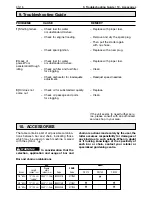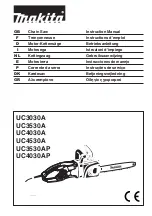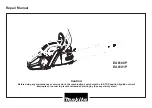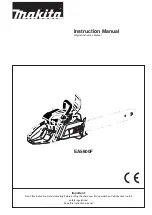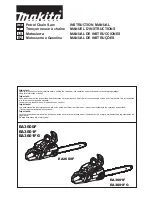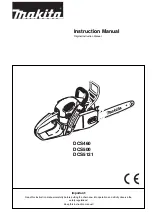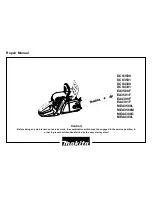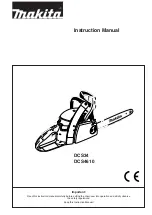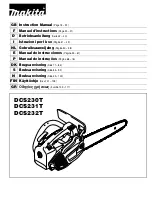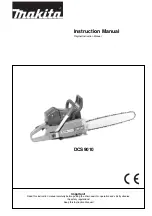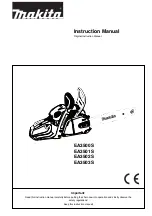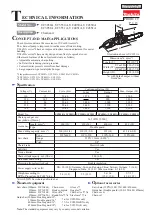
1.2 WORKING WITH TREE SERVICE
CHAIN-SAWS FROM A ROPE AND
HARNESS
This chapter sets out working practices to redu-
ce the risk of injury from tree service chainsaws
when working at height from a rope and harness.
While it may form the basis of guidance and
training literature, it should not be regarded as a
substitute for formal training.
General requirements working at height
Operators of tree service chainsaws working at
height from a rope and harness should never
work alone.
A competent ground worker trained in appropri-
ate emergency procedures should assist them.
Operators of tree service chainsaws for this work
should be trained in general safe climbing and
work positioning techniques and shall properly
equipped with harnesses, ropes, strops, kara-
biners and other equipment for maintaining se-
cure and safe working positions for both
themselves and the saw.
Preparing to use the saw in the tree
The chainsaw should checked,
fuelled, started and warmed up
by the ground worker before it is
sent up to the operator in the
tree.
The chainsaw should be fitted
with a suitable strop for attach-
ing to the operator’s harness:
a) choke the strop around the attachment point
on the rear of the saw (A);
b) provide suitable karabiners to allow indirect
(i.e. via the strop) and direct attachment (i.e.
at the attachment point on the saw) of saw to
the operators harness;
c) ensure the saw is securely attached when it is
being sent up to the operator;
d) ensure the saw it secured to the harness
before it is disconnected from the means of
ascent.
The saw should only be attached to the recom-
mended attachment points on the harness.
These may be at mid-point (front or rear) or at
the sides.
Where possible attaching the saw to centre rear
mid-point will keep it clear of climbing lines and
support its weight centrally down the operator’s
spine.
When moving the saw from
any attachment point to ano-
ther, operators should ensure
it is secured in the new posi-
tion before releasing it from
the previous attachment
point.
Using the chainsaw in the tree
An analysis of accidents with these saws during
tree service operations shows the primary cause
as being inappropriate one-handed use of the
saw. In the vast majority of accidents, operators
fail to adopt a secure work position witch allows
them to hold both handles of the saw.
This results in an increased risk of injury due to:
• not having a firm grip on the saw if it kicks
back;
• a lack of control of the saw such that it is
more liable to contact climbing lines and
operators body (particularly the left hand and
arm)
• losing control from insecure work position
resulting in contact with the saw (unexpected
movement during operation of the saw)
EN 4
1. For Safe Operation
(A)


















